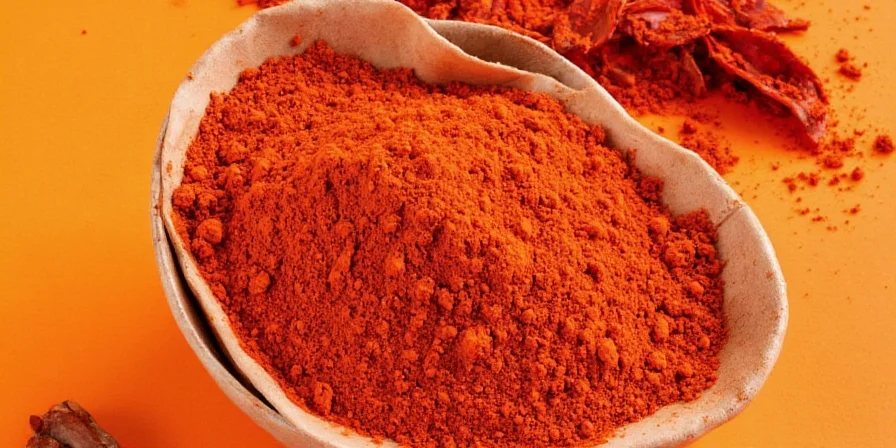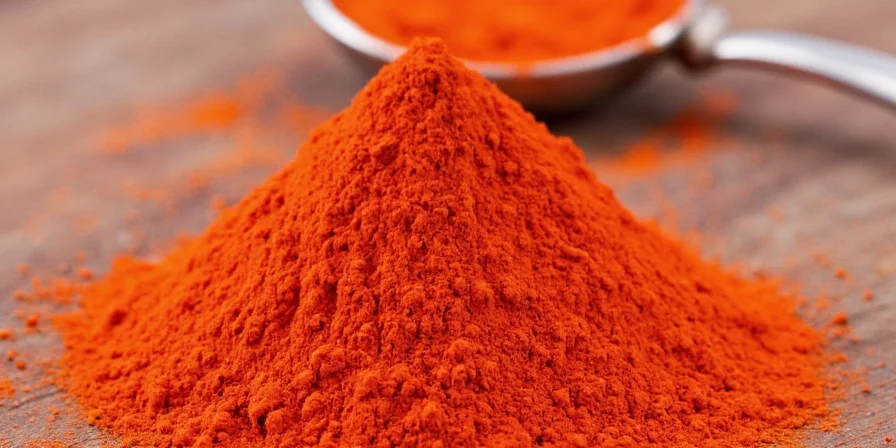Paprika is a ground spice made from dried Capsicum annuum peppers, ranging from sweet to hot varieties depending on processing methods. Unlike chili powder which contains additional spices, pure paprika delivers concentrated pepper flavor and vibrant red color. This definitive guide answers exactly what paprika is, how different types work in cooking, and precise techniques for perfect results - no fluff or unsupported health claims.
What Is Paprika? The Essential Definition
Paprika is a spice created by grinding dried Capsicum annuum peppers (the same species as bell peppers and jalapeños) into a fine powder. The critical distinction between paprika and chili powder: paprika contains only ground peppers, while chili powder blends paprika with cumin, garlic powder, oregano, and other spices. This single-ingredient purity makes paprika indispensable for achieving authentic color and specific pepper flavor without competing seasonings.
Processing method—not just pepper variety—determines paprika's characteristics:
- Hungarian paprika: Made from peppers dried without smoking, emphasizing natural sweetness
- Spanish pimentón: Created by smoking peppers over oak before drying, adding distinctive depth
- Hot varieties: Include pepper seeds and membranes for increased capsaicin content

Types of Paprika Compared: What You Need to Know
Understanding these four primary paprika categories prevents recipe failures and shopping mistakes. This comparison focuses on practical kitchen differences rather than regional origins alone.
| Type | Heat Level | Distinctive Feature | Best Uses | Substitute |
|---|---|---|---|---|
| Sweet Paprika | 0-100 SHU | Pure pepper sweetness without smoke | Color in deviled eggs, potato salad, light sauces | Paprika blend + pinch cayenne |
| Smoked Paprika (Pimentón) | 100-1,000 SHU | Wood-smoked depth (oak/hickory) | Bean dishes, chorizo, grilled meats, paella | Regular paprika + 1/8 tsp liquid smoke |
| Hot Paprika | 5,000-10,000 SHU | Sharp heat without smoke | Spice rubs, stews, hearty sauces | Cayenne pepper (use 1/2 amount) |
| Hot Smoked Paprika | 5,000-15,000 SHU | Smoke + significant heat | Authentic chorizo, spicy bbq sauces | Smoked paprika + cayenne (1:1) |

How to Use Paprika Properly: 4 Essential Techniques
These methods solve the most common paprika problems home cooks face:
1. Avoid Bitterness: The Oil Bloom Method (Critical!)
Never add paprika directly to dry ingredients or high-heat pans. Proper technique: heat 1 tsp oil in pan, add paprika, stir 15 seconds until fragrant, then add other ingredients. This activates flavor compounds without burning.
2. Perfect Color Without Overpowering Flavor
Add sweet paprika during last 5 minutes of cooking. Heat degrades paprika's vibrant red pigments (carotenoids), causing dull color and potential bitterness. For soups/stews, stir in after turning off heat.
3. Heat Control System
Use sweet paprika in cooking base for color, then add hot paprika only at final seasoning. This prevents bitter heat notes while maintaining vibrant appearance.
4. Authentic Spanish Smoked Flavor (Without Pimentón)
No smoked paprika? Heat 1 tsp oil with 1/4 tsp regular paprika + 1/8 tsp liquid smoke for 15 seconds before adding to dishes. Works perfectly in bean dishes where traditional pimentón would be used.

Common Paprika Questions Answered Immediately
"Can I substitute chili powder for paprika?"
No direct substitution. Chili powder contains cumin, oregano, and garlic powder that alter flavor profiles. For color: use sweet paprika alone. For heat: combine sweet paprika with cayenne (1:1 ratio).
"Why does my paprika taste bitter?"
Burning occurs when paprika contacts dry heat above 350°F (175°C). Always bloom in oil first, never add directly to hot pans. If bitterness happens, immediately transfer mixture to new pan—bitter compounds won't dissipate.
"How long does paprika stay fresh?"
Six months in optimal storage (cool, dark, airtight container). Test freshness by rubbing between fingers—if aroma isn't vibrant, replace it. Light exposure fades color within 6 months even if sealed.
"Is smoked paprika always spicy?"
No. Spanish pimentón comes in sweet (dulce), bittersweet (agridulce), and hot (picante) varieties. Check labels for 'dulce' to avoid unintended heat in dishes like potato salad.
Paprika Storage Guide: Maximizing Freshness
Extend paprika's shelf life with these proven methods:
- Container: Store in opaque container (never clear glass)
- Location: Away from stove/oven (heat degrades pigments)
- Temperature: Below 70°F (21°C) ideal
- Humidity: Below 60% to prevent clumping
- Revival trick: Mix faded paprika with warm olive oil (never dry-toast)

Proven Cooking Applications by Dish Type
Match paprika variety to dish weight for perfect results:
| Dish Type | Recommended Paprika | Amount per Serving | Critical Timing |
|---|---|---|---|
| Deviled Eggs | Sweet Hungarian | 1/8 tsp per egg | Final garnish only |
| Chicken Paprikash | Hot Hungarian | 1.5 tsp per serving | Bloom in oil before adding chicken |
| Paella | Smoked Spanish (dulce) | 1 tsp per serving | Add with sofrito base |
| BBQ Rub | Hot Smoked | 1 tbsp per cup rub | Mix with dry ingredients |

What Makes Hungarian Paprika Different?
Hungarian varieties use specific regional pepper cultivars (like Különleges and Édesnemes) dried without smoking. Their classification system prioritizes color intensity and sweetness levels over heat, unlike other global styles. True Hungarian paprika comes from the Kalocsa or Szeged regions and carries EU Protected Designation of Origin status. Look for "Magyar Fűszerpaprika" on labels for authenticity.
Conclusion: Mastering Paprika in Your Kitchen
The key to perfect paprika usage lies in understanding processing methods rather than just heat levels. By matching paprika type to dish requirements, blooming properly in oil, and respecting its heat sensitivity, you'll achieve restaurant-quality results every time. Remember: sweet for color without heat, smoked for depth in hearty dishes, and hot varieties only when sharp pepper flavor is essential. Proper storage maintains vibrant color and fresh aroma for six months. With these precise techniques, paprika transforms from a basic spice to your most versatile kitchen tool.












 浙公网安备
33010002000092号
浙公网安备
33010002000092号 浙B2-20120091-4
浙B2-20120091-4